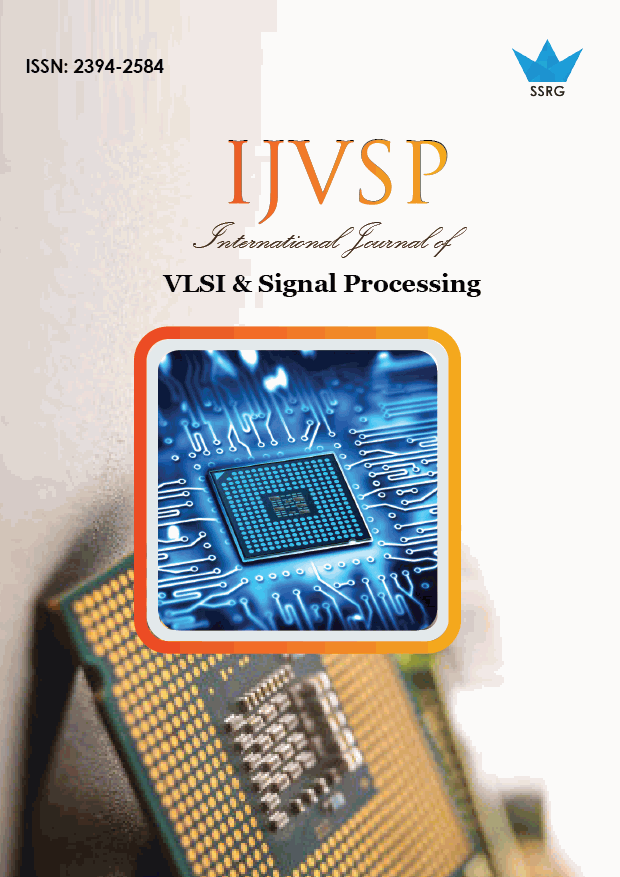A Comparative Study of Vision Guided AUV Navigation Techniques for Pipeline/Cable Inspection

| International Journal of VLSI & Signal Processing |
| © 2015 by SSRG - IJVSP Journal |
| Volume 2 Issue 2 |
| Year of Publication : 2015 |
| Authors : Alex Raj S.M , Aruna S. Rajan and Supriya M. H |
How to Cite?
Alex Raj S.M , Aruna S. Rajan and Supriya M. H, "A Comparative Study of Vision Guided AUV Navigation Techniques for Pipeline/Cable Inspection," SSRG International Journal of VLSI & Signal Processing, vol. 2, no. 2, pp. 42-47, 2015. Crossref, https://doi.org/10.14445/23942584/IJVSP-V2I2P107
Abstract:
In the last few years exploitation of underwater gas and oil fields have increased. The produced oil and gas is transported mainly using pipelines which need to be inspected regularly. Submarine communication cables are laid on the sea floor for data communication across stretches of ocean. Due to earthquakes and other environmental changes these underwater cables and pipelines can get wear or get damaged. These damages need to be found and repaired quickly. Also the state of the pipelines and cables need to be constantly monitored. Currently inspection of underwater pipelines are done using Remotely Operated Vehicles (ROVs) which require human intervention. But this method is very risky. A more practical solution is to develop an intelligent vision based navigation and guidance system which involves efficient method for vision based target detection and tracking methods in underwater environment. AUVs used for survey missions in an underwater environment requires advanced precision navigation systems. Navigation usually requires high speed and high accuracy computation. Navigation is done through different techniques of which vision based navigation is the cheapest as it requires only a single camera. This paper presents a review on various AUV navigation techniques which uses vision sensor or any combination of vision sensor with any other sensor for navigation over the last decade
Keywords:
Automatic Underwater Vehicle, Navigation, CCD camera, Vision, Optical Flow, Mean Shift Tracking, Segmentation
References:
[1] L. Stutters, H. Liu, C. Tiltman, & D. J. Brown, “Navigation technologies for autonomous underwater vehicles,” IEEE Transactions on Systems, Man, and Cybernetics, Part C: Applications and Reviews, pp. 581-589, 2008.
[2] Wen-Miin Tian, “Integrated method for the detection and location of underwater pipelines." Applied Acoustics. 69, pp. 387-398, 2008.
[3] J. Agbakwuru, “Oil/Gas Pipeline Leak Inspection and Repair in Underwater Poor Visibility Conditions: Challenges and Perspectives,” Journal of Environmental Protection, 2012.
[4] EdgeTech, Affiliate of ORE Offshore website [Online]. Available: http://www.edgetech.com/
[5] The National Geographic website [Online], Available: http://ocean.nationalgeographic.com
[6] J. Hallset, “A prototype autonomous underwater vehicle for pipeline inspection”, in Proc. Fifth International Conference on Advanced Robotics, 1991. Robots in Unstructured Environments, 91 ICAR., vol.2, pp. 1565-1568, June 1991.
[7] J. Hallset, “Simple vision tracking of pipelines for an autonomous underwater vehicle", in Proc. IEEE International Conference on Robotics and Automation, pp. 2767-2772 vol.3, Apr 1991.
[8] B. Balasuriya, M. Takai, W. Lam, T. Ura, and Y. Kuroda, “Vision based autonomous underwater vehicle navigation: underwater cable tracking," in Proc. OCEANS '97. MTS/IEEE , pp. 1418-1424 vol.2, Oct 1997.
[9] A. Balasuriya and T. Ura, “Autonomous target tracking by underwater robots based on vision," in Proc. International Symposium on Underwater Technology, 1998., pp. 191-197, Apr 1998.
[10] P. Zingaretti and S. M. Zanoli, “Robust real-time detection of an underwater pipeline," Engineering Applications of Artificial Intelligence, vol. 11, no. 2, pp. 257-268, 1998.
[11] A. Balasuriya and T. Ura, “Autonomous target tracking by twin-burger 2," in Proc. 2000 IEEE/RSJ International Conference on Intelligent Robots and Systems, 2000. (IROS 2000), vol. 2, pp. 849-854 vol.2, 2000.
[12] A. Balasuriya and T. Ura, “Autonomous underwater vehicles for submarine cable inspection: experimental results," in Proc. 2001 IEEE International Conference on Systems, Man, and Cybernetics, vol. 1, pp. 377-382 vol.1, 2001.
[13] J. Antich and A. Ortiz, “Underwater cable tracking by visual feedback," in Pattern Recognition and Image Analysis, pp. 53-61, Springer, 2003.
[14] G. L. Foresti, “Visual inspection of sea bottom structures by an autonomous underwater vehicle," IEEE Transactions on Systems, Man, and Cybernetics, Part B: Cybernetics, vol. 31, no. 5, pp. 691-705, 2001.
[15] A. Ortiz, M. Simo, and G. Oliver, “A vision system for an underwater cable tracker," Machine vision and applications, vol. 13, no. 3, pp. 129-140, 2002.
[16] D. Lim, “Design of a vision system for an autonomous underwater vehicle”, B. Eng. thesis, University of Western Australia, Electronic and Computer Engineering, 2004.
[17] M. Asif and M. R. Arshad, “An active contour and Kalman filter for underwater target tracking and navigation”, INTECH Open Access Publisher, 2006.
[18] M. Narimani, S. Nazem, and M. Loueipour, “Robotics vision-based system for an underwater pipeline and cable tracker," in OCEANS 2009-EUROPE, pp. 1-6, IEEE, 2009.
[19] C.C. Cheng and B.T. Jiang, “A robust visual servo scheme for underwater pipeline following," in Proc. 19th International Conference on Systems, Signals and Image Processing (IWSSIP), pp. 456-459, IEEE, 2012.
[20] P. Drews, V. Kuhn, and S. Gomes, “Tracking system for underwater inspection using computer vision," in Proc. International Conference on Offshore and Marine Technology: Science and Innovation (NAVTEC), pp. 27-30, IEEE, 2012.
[21] L. Fei and Z. Xinying, “Underwater target tracking based on particle filter," in Proc. 7th International Conference on Computer Science & Education (ICCSE), 2012, pp. 36-40, IEEE, 2012.
[22] D. Lee, G. Kim, D. Kim, H. Myung, and H.-T. Choi, “Vision based object detection and tracking for autonomous navigation of underwater robots," Ocean Engineering, vol. 48, pp. 59-68, 2012.
[23] Wikipedia, Inertial Navigation System, [Online] Available:http://en.wikipedia.org/wiki/Inertial_navigation_system

 10.14445/23942584/IJVSP-V2I2P107
10.14445/23942584/IJVSP-V2I2P107